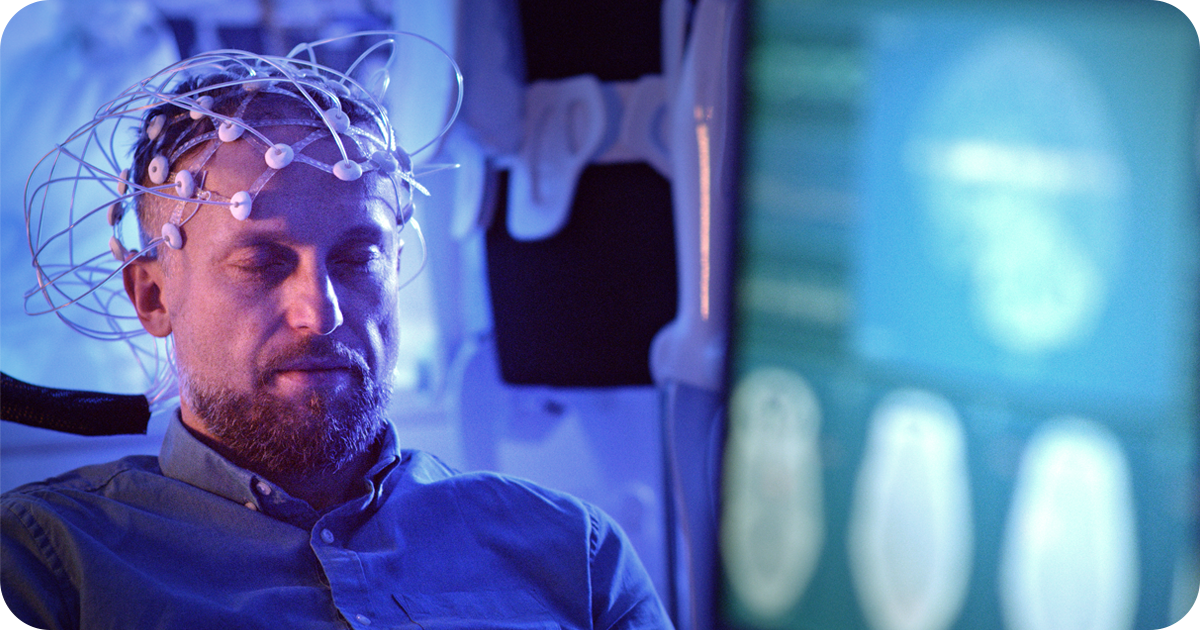
Addiction Recovery Through Brain Painting
Photo from Getty Images
Originally Posted On: https://stairwayrecovery.com/blog/addiction-recovery-brain-painting/
Substance abuse can be all-consuming, for both the person struggling with addiction and their loved ones. According to the National Center for Drug Abuse Statistics, for individuals under 45 years old, accidental overdose is the main cause of death. Over 70,000 deaths occur in the US from drug overdose annually.[1] The war on drugs vilified and criminalized those affected, with no noticeable improvement for those who needed it most. Now, we are trying a different approach – one that promotes healing and safety.
For almost a century, addiction has been recognized by the US National Institute on Drug Abuse as a disease of the brain. Though this has been challenged in recent years, it is still widely held in the neuroscience fields that addiction is a brain disease. As a result, some suggest a more intensified neuroscience-based study of addiction and recovery.[2]
If addiction is a disease of the brain, then more effective treatment methods should involve treating the brain chemistry that changes in those that experience a substance abuse disorder. Brain painting is a potential answer to finding a solution in the neuroscience field for those that struggle with addiction.
Understanding Addiction
A large portion of the population will experience the effects of recreational drug abuse, but only a fraction of those people will transition to the compulsive pathological syndrome that is typical of drug addiction. The NDAS states that roughly 53 million Americans aged 12 and older have used an illegal drug or have misused a prescription drug in the last year; however, substance abuse disorder, or addiction, affects a portion of them at just over 20 million Americans aged 12 and older. This syndrome is different than substance abuse because it is characterized by cycles of abstinence, withdrawal, craving, and relapse.
Addiction has been identified as three stages:
- preoccupation/anticipation
- binge/intoxication
- withdrawal/ negative affect
Complex interactions between the type of drug, a vulnerable genotype, and environmental factors are believed to cause a person’s vulnerability to addiction, so it is impossible to determine your risk factor until after addiction has already set in.[3] Anyone can develop an addiction and you should not blame yourself for developing this medical condition.
The best way to treat addiction is to understand the underlying causes. We understand addiction is known to affect the brain in multiple ways. One way addiction alters brain chemistry is that it will take over brain reward circuits. Significant research has been completed to understand through which mechanism repeated consumption of a drug of abuse causes this change.[4] One likely route is through alteration of the dopamine system, as this neurotransmitter is released from the reward center of the brain.
The Role of Dopamine
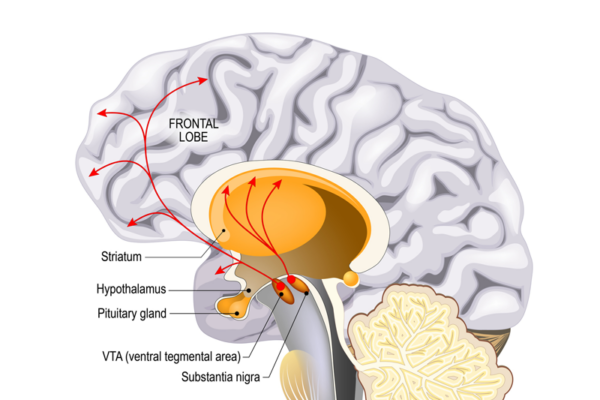 Photo from Getty Images
Photo from Getty Images
Dopamine is involved when a person experiences pleasure, motivation, and learning – feelings tied to life-sustaining conditions and activities. Drugs of abuse bypass this normal system and flood the brain with dopamine, creating the pleasant feeling associated with drug use. Almost all drugs used in this manner affected the dopamine system by increasing dopamine signaling and rewarding substance use. This excessive dopamine signaling may alter synaptic function and lead to behaviors that interfere with daily living and the ability to participate in one’s surroundings. Habitual use of these drugs will trick the brain into thinking it is making too much dopamine; in response, it will lower the baseline amount of dopamine it creates or eliminates dopamine receptors.
Cues that signal a delay in accessing the substance of abuse will also become aversive.[5] Low dopamine levels in animals significantly affect their quality of life. They lack the motivation to respond to anything except the most extreme stimuli, like escaping from restraint or foot shock, and will lack spontaneous movement. These animals also do not respond to food odors and reject offered water and food. They lack the motivation to react to the predictive stimuli that guide the animal from one reward to another.
Similarly, a person with low dopamine levels will experience less pleasure and happiness in their day-to-day life. This contributes to the compulsive use of the substance, as the person will desire the dopamine rush more and more as their brain continuously lowers its baseline dopamine production. Everyday life becomes less stimulating, with the dopamine flood from the abused substance as their only source of happiness. Ultimately, addiction will change the brain chemistry of the affected person.
Neurofeedback
Neurofeedback is a potential answer to the brain chemistry change after a person experiences addiction. It is suggested as a complementary treatment option for addiction recovery. Neurofeedback is a type of biofeedback, a process of increasing self-awareness of one’s own physiological functions with the end goal of manipulating some of those functions. Therefore, neurofeedback is a therapeutic treatment focused on identifying and directing brain activity to improve cognitive, emotional, physical, and behavioral experiences.[6]
Brain activity for this therapy is read through brain waves, the sum of millions of neurons all firing at once. Neurons can fire at different frequencies (speeds), creating a spectrum of brain wave frequencies that convey different meanings about emotions, physical movement, concentration, and creative expression. Issues arise when frequencies do not fire optimally for a given activity. For example, if the sleep brainwave is too active during the day, it will cause daytime drowsiness and insomnia. Similarly, an active brainwave being too dominant during the day will also cause insomnia.
Does Neurofeedback Actually Work?
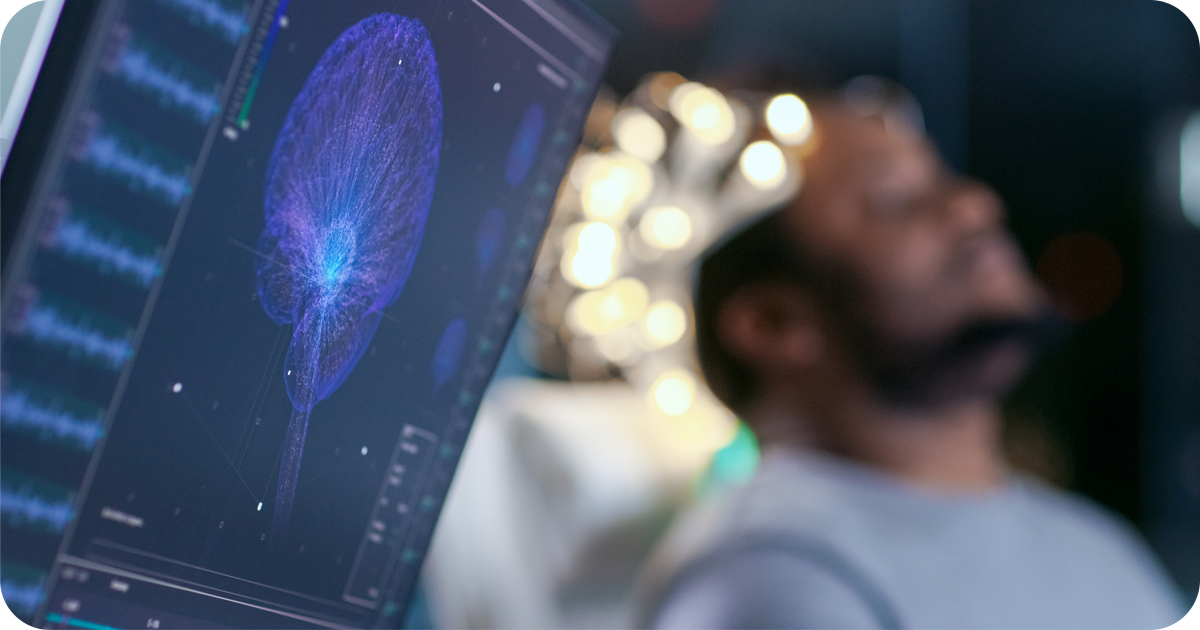 Photo from Getty Images
Photo from Getty Images
If a person is able to identify issues in their brain waves and then self-regulate how their individual brain responds, they can gain control over processes not usually available for conscious regulation. Neurofeedback therapy methods have been shown to increase the task-related release of dopamine, with a plausible assumption that the dopamine release occurred as a result of positive reward and/or negative feedback.[7]
Electroencephalography (EEG), functional magnetic resonance imaging (fMRI), and functional near-infrared spectroscopy (fNIRS) make this treatment possible by recording real-time feedback from the brain. Patients can observe this real-time feedback acoustically, tactilely, or visually and then use that information to regulate their brain activity accordingly. This method does not train the mind but trains the brain to have healthier responses.
Multiple studies have shown success with neurofeedback training therapy. Individual case studies show profound effects on the individual’s EEG between therapy beginning and after long-term use. Temptation and craving for the substance of abuse could be reduced with this type of brain training. Strategies gained in this type of therapy can be used to strengthen self-control when exposed to the potential substance of abuse triggers. It can help negate the weakened self-control that many with substance abuse issues experience due to the dopamine system changes.[8]
Further, results have also shown long-term neurofeedback training may be a more effective treatment for substance abuse than pharmacotherapy alone. Incorporating neurofeedback therapy can help reduce the need for pharmacotherapy, thus reducing side effects, instability, and the high rate of relapse. Research also shows long-term stability in neurofeedback effects.
Altogether, this means pharmacotherapy can be used during the initial phase of treatment to aid in physiological and psychological health, then neurofeedback training can provide longer-lasting health and balance.[9] Unfortunately, this treatment method will not be a success for everyone. About 30% of neurofeedback study participants are not able to successfully learn self-regulation of brain activity. This simply means we will work to find other methods to ensure your success.
What Is Brain Painting?
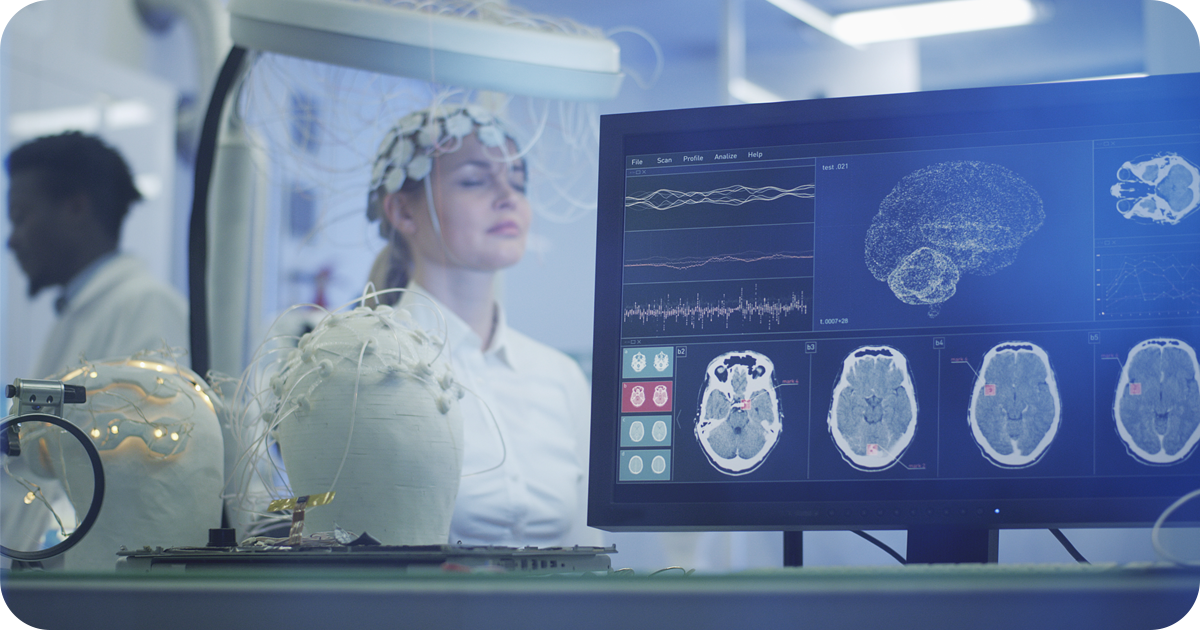 Photo from Getty Images
Photo from Getty Images
So, what is brain painting and how does it fit into addiction-treatment therapy with neurofeedback? Brain painting is a non-invasive branch of neurofeedback therapy that focuses specifically on visual outputs. Sensors that detect brain waves and frequencies are placed on the patient’s scalp, then these sensors transmit the patient’s response to questions and stimuli. Patients are able to see how their brain is functioning in real-time and then attempt to replace undesired reactions with desired reactions.
Operant conditioning is the driving factor behind these behavior changes. Consequences control behavior in the operant conditioning system. Operant behavior is susceptible to reinforcement and punishment through that behavior’s consequences. Achieving the desired emotional outputs is the reward in this system. The patient can see the movement towards the desired reaction in their brain waves through the real-time feedback and adjust their behavior accordingly. Alternatively, the punishment in this system is moving further from the desired brain wave frequency; an action the patient will try to avoid.
Brain painting is not a cure for addiction; however, studies suggest it could be used both as a primary treatment approach and in conjunction with other treatment methods. An advantage to this type of treatment is the suggested longevity of clinical effects. This therapy is extremely tailored to an individual’s needs and capabilities. Brain painting for addiction recovery will not work for everyone, but the potential benefits make it a worthwhile therapy to attempt during your journey with us.
Brain Painting with Stairway Resource Center
At Stairway Resource Center, we recognize that substance abuse disorder is a complex issue. It can be complicated even further by co-occurring conditions, as millions of adults over the age of 18 will struggle with both a substance abuse disorder and mental illness. Brain painting and neurofeedback will not solve addiction, but they can be a useful tool when used with the complete treatment plan we design specifically for you.
This therapy may also be beneficial in multiple ways, as its also shown success in managing symptoms of other conditions such as attention deficit hyperactivity disorder (ADHD), autism/Asperger’s, chronic pain, depression, fears or phobias, post-traumatic stress disorder, trauma, and anxiety.
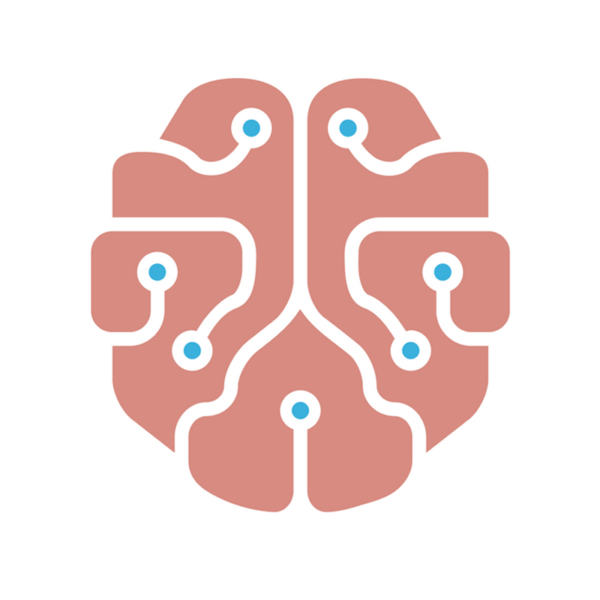 Photo from Getty Images
Photo from Getty Images
We offer solutions like detox, residential treatment, multiple levels of outpatient treatment, ongoing coaching for entering back into the workforce, housing issues, addressing court orders, reuniting with family, and all other areas that can support successfully returning to your life. Our caring staff’s mission is to provide state-of-the-art treatment for substance abuse that is individualized and successful. We guide every person that comes to us for help to their own personal path of healing through careful guidance, support, confidence building, and learning how to remain clean and sober.
Reach Out to Stairway Resource Center
You are experiencing a chronic illness like any other, and it speaks no ill of you. We will provide holistic, multidisciplinary healing methods that will have positive effects on you and your loved ones for many years to come. Contact us today and let us help you regain control of your life. You are not alone in this fight.
